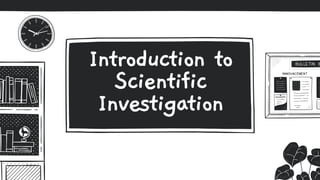Scientific-Method.pdfScientific-Method.p
Scientific-MethoScientific-Method.pdfScientific-Method.pScientific-Method.pdfScientific-Method.pd.pdfScientific-Method.pScientific-Method.pdfScientific-Method.pScientific-MethoScientific-Method.pdfScientific-Method.pScientific-Method.pdfScientific-Method.pd.pdfScientific-Method.pScientific-Method.pdfScientific-Method.pScientific-MethoScientific-Method.pdfScientific-Method.pScientific-Method.pdfScientific-Method.pd.pdfScientific-Method.pScientific-Method.pdfScientific-Method.pScientific-MethoScientific-Method.pdfScientific-Method.pScientific-Method.pdfScientific-Method.pd.pdfScientific-Method.pScientific-Method.pdfScientific-Method.pScientific-MethoScientific-Method.pdfScientific-Method.pScientific-Method.pdfScientific-Method.pd.pdfScientific-Method.pScientific-Method.pdfScientific-Method.pScientific-MethoScientific-Method.pdfScientific-Method.pScientific-Method.pdfScientific-Method.pd.pdfScientific-Method.pScientific-Method.pdfScientific-Method.pScientific-MethoScientific-Method.pdfScientific-Method.pScientific-Method.pdfScientific-Method.pd.pdfScientific-Method.pScientific-Method.pdfScientific-Method.pScientific-MethoScientific-Method.pdfScientific-Method.pScientific-Method.pdfScientific-Method.pd.pdfScientific-Method.pScientific-Method.pdfScientific-Method.pScientific-MethoScientific-Method.pdfScientific-Method.pScientific-Method.pdfScientific-Method.pd.pdfScientific-Method.pScientific-Method.pdfScientific-Method.pScientific-MethoScientific-Method.pdfScientific-Method.pScientific-Method.pdfScientific-Method.pd.pdfScientific-Method.pScientific-Method.pdfScientific-Method.pScientific-MethoScientific-Method.pdfScientific-Method.pScientific-Method.pdfScientific-Method.pd.pdfScientific-Method.pScientific-Method.pdfScientific-Method.pScientific-MethoScientific-Method.pdfScientific-Method.pScientific-Method.pdfScientific-Method.pd.pdfScientific-Method.pScientific-Method.pdfScientific-Method.pScientific-MethoScientific-Method.pdfScientific-Method.pScientific-Method.pdfScientific-Method.pd.pdfScientific-Method.pScientific-Method.pdfScientific-Method.pScientific-MethoScientific-Method.pdfScientific-Method.pScientific-Method.pdfScientific-Method.pd.pdfScientific-Method.pScientific-Method.pdfScientific-Method.pScientific-MethoScientific-Method.pdfScientific-Method.pScientific-Method.pdfScientific-Method.pd.pdfScientific-Method.pScientific-Method.pdfScientific-Method.pScientific-MethoScientific-Method.pdfScientific-Method.pScientific-Method.pdfScientific-Method.pd.pdfScientific-Method.pScientific-Method.pdfScientific-Method.pScientific-MethoScientific-Method.pdfScientific-Method.pScientific-Method.pdfScientific-Method.pd.pdfScientific-Method.pScientific-Method.pdfScientific-Method.pScientific-MethoScientific-Method.pdfScientific-Method.pScientific-Method.pdfScientific-Method.pd.pdfScientific-Method.pScientific-Method.pdfScientific-Method.pScientific-MethoScientific-Method.pdfScientific-Method.pScientific-Method.pdfScientific-Method.pd.pdfScientific-MethoDH

Recommended
More Related Content
Similar to Scientific-Method.pdfScientific-Method.p
Similar to Scientific-Method.pdfScientific-Method.p (20)
Recently uploaded
Recently uploaded (20)
Scientific-Method.pdfScientific-Method.p
- 5. • Making an Observation Observation is the process of getting information about the things around you.
- 6. Qualitative Observations Quantitative Observations ✓ Gathering of data using the senses. • Sight • Taste • Smell • Hearing • Touch ✓ It is a subjective method of gathering information as it depends on the researcher’s sensory organs. ✓ Does not use or without numerical values. ✓ An objective method of data analysis that measures research variables in terms of quantity hence; it is usually associated with values that can be counted such as age, weight, volume, and scale. ✓ Uses numerical data
- 7. OBSERVATION: The tomato plant that is placed in an area with sunlight has a lot of fruits. On the other hand, the tomato plant that is placed on a shaded area has lesser fruits.
- 8. 2. Asking a Question ✓ A problem is a question that you want to solve or the things you want to discover. ✓ Develop a question or problem that can be solved through experimentation. ✓ Usually a “How” or “Why” type of question. Everything starts with an observation and what you perceive with your senses.
- 9. QUESTION/PROBLEM: Why is the tomato plant located where there is sunlight have more fruits than the tomato plant located on a place where there is little amount of sunlight?
- 10. 3. Formulating a Hypothesis ✓ A hypothesis is an educated guess, a tentative answer, or a potential answer to the question or problem asked. ✓ A proposed answer to your question ✓ Usually written in the “if-then” format
- 11. HYPOTHESIS: If tomato plant is placed in an area where there is enough sunlight, then it will produce more fruits.
- 12. 4. Performing an Experiment ✓ An experiment is a series of tests used to verify the hypothesis. ✓ This includes variables (quantity that is changed during the experiment or being measured) THREE TYPES OF VARIABLES ❑ Independent variable ❑ Dependent variable ❑ Controlled variable
- 13. HYPOTHESIS: If tomato plant is placed in an area where there is enough sunlight, then it will produce more fruits. INDEPENDENT VARIABLE – amount of sunlight DEPENDENT VARIABLE – number of fruits that a tomato plant will produce CONTROLLED VARIABLE – amount of water, type of soil, type of plant, and the size of the pot.
- 14. 5. Recording and Analyzing Results ✓ This step is where you will report, interpret, and explain what happened in your experiment. ✓ Data are the information that you gathered in your experiment.
- 15. 6. Drawing a Conclusion ✓ Conclusion is the summary of the results you gathered in your experiment. ✓ This will give you an answer if your hypothesis is correct or not. ✓ If the hypothesis is correct, this may be the answer to your problem. If not, you need to repeat the experiment or think of a new approach to improve your procedure.s
- 16. CONCLUSION: Plants such as tomato plant that are placed in an area with enough amount of sunlight produce more fruits than those plants placed in less amount of sunlight.
- 17. 7. Communicating the Result ✓ Informing others about the results of the experiment. ✓ Publishing on scientific journals, presenting using a poster, or presenting at a conference.